Do you have big biceps but small forearms? If so, then don’t worry about it. So do 80% of lifters if I had to put a number on it. And that’s because, for years, the fitness world has been obsessed with the biceps muscle.
Yet anyone who does real work has the opposite problem (if you can call it that). Many manual laborers, while they might have good biceps, often have fantastic forearm development.
But it seems like most gym-goers forget that their forearms even exist. Rather than man up and go strapless, they rely on modern training gear to get through yet another aesthetics-driven workout.
But I’m here to change that. With these 6 tips, you’ll have more proportional forearms in around 6 months (it doesn’t happen overnight).
Related forearm building guides
Big biceps, small forearms solutions
Increase your training volume
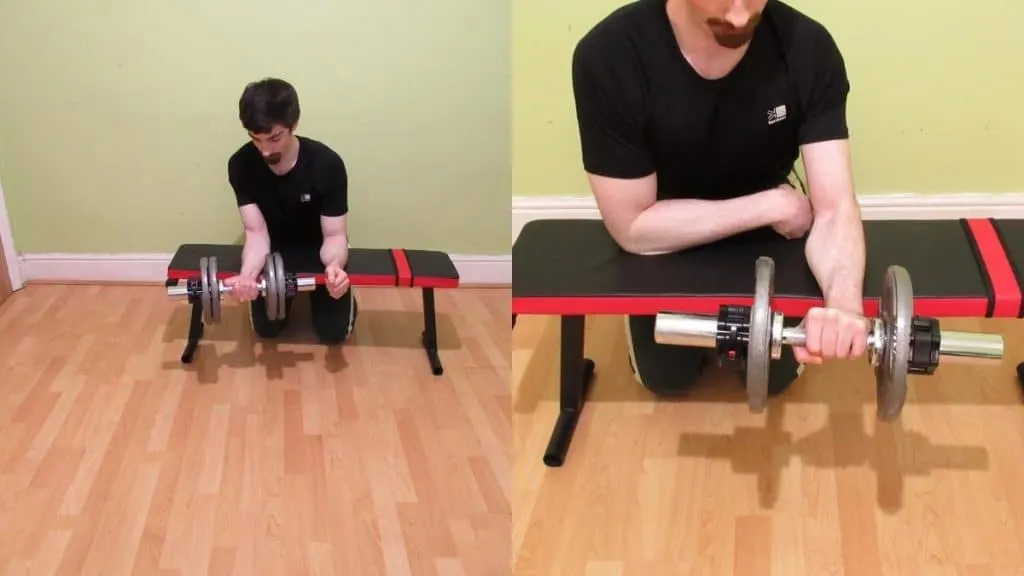
If you have big biceps, small forearms, and decent muscularity elsewhere, then your first port of call should always be training volume.
Now, here’s where it gets a bit tricky.
If you’re doing loads of wrist curls but still have sub-par skinny forearms, then you might actually need to decrease your volume so that your muscles have time to recover. A good rule of thumb is this: If you’re not getting stronger, and you’re also not near your genetic forearm potential, then you’re probably doing too much volume in the gym.
If, however, you do a few half-assed sets of wrist curls nowhere near failure after your arm workout, then you might need to up the volume.
There’s no magic volume range here because it all depends on your recovery capacity, volume tolerance, and training status. I’m a fan of lower volumes and higher proximities to muscular failure because, in my mind, at least, it allows me to get comparable results while spending a fraction of the time in the gym.
Bump up your training frequency
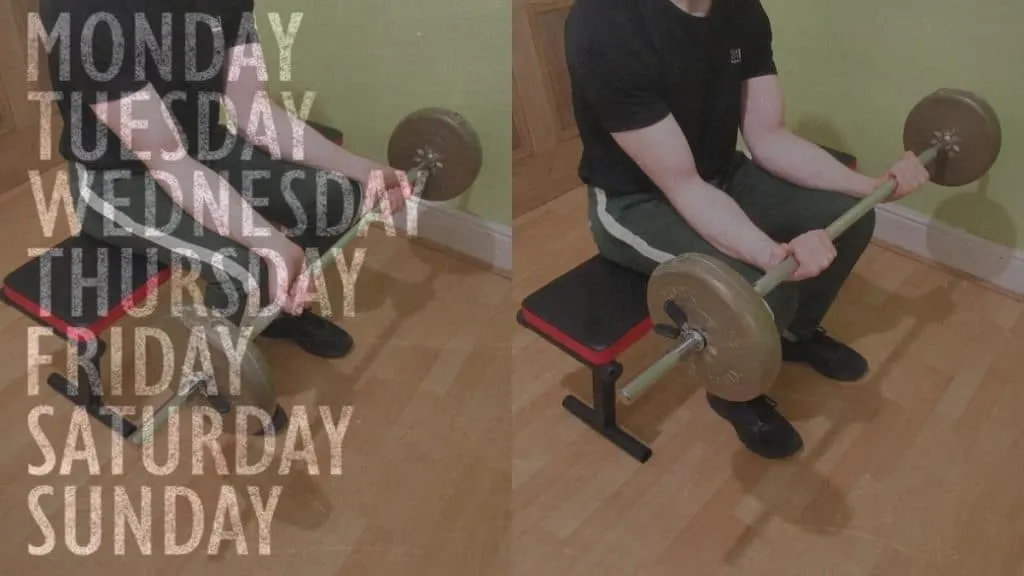
If playing with the volume doesn’t cure your (very normal) “deformity,” then bump up the frequency. As I mentioned earlier on, anyone who works with their hands for a living usually has excellent forearm development. And they certainly aren’t taking a whole week off between sessions.
Consider training further away from failure but working your forearms with 2-3 sets 3 times a week. That way, you’ll keep the volume in check while realizing some of the potential benefits of high frequency training.
Improve your mind muscle connection
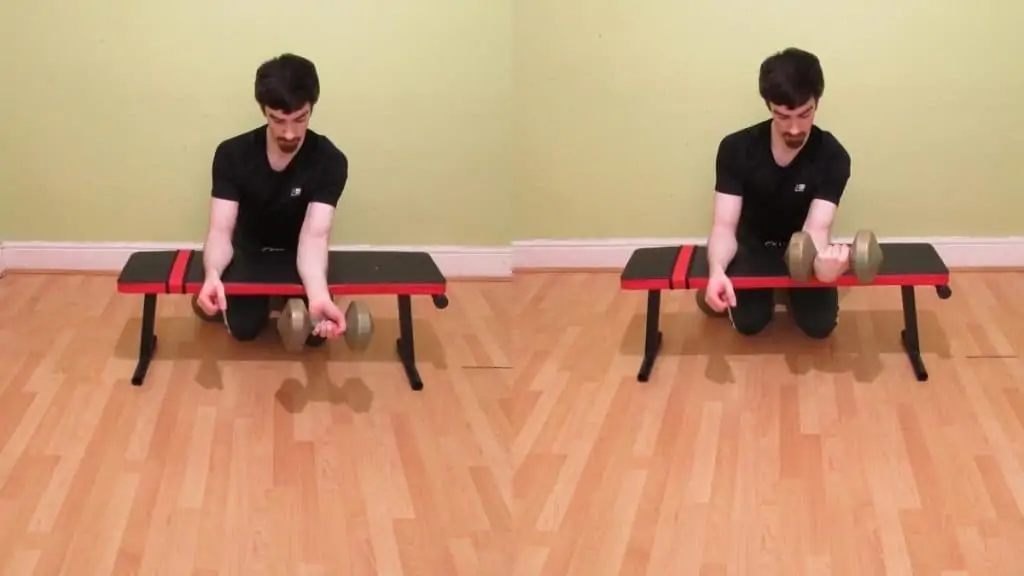
Unless you’re gripping heavy objects like a strongman competitor, you need to use good form if you want to avoid having big biceps and small forearms.
That’s because sloppy form leads to a sloppy physique.
If it helps, train each forearm separately with dumbbells. Mentally think about the muscle stretching and contracting as you perform each rep.
And if that doesn’t work, slow down your tempo so that you have no choice but to feel the muscle working.
Don’t, however, get sucked into buying these pump supplements. I’m not saying that they’re all terrible, but they’re certainly nowhere near to being a solution. After all, if you can buy it for money (cheaply), it’s probably not the solution you’re looking for.
Real results take work.
Try grip training
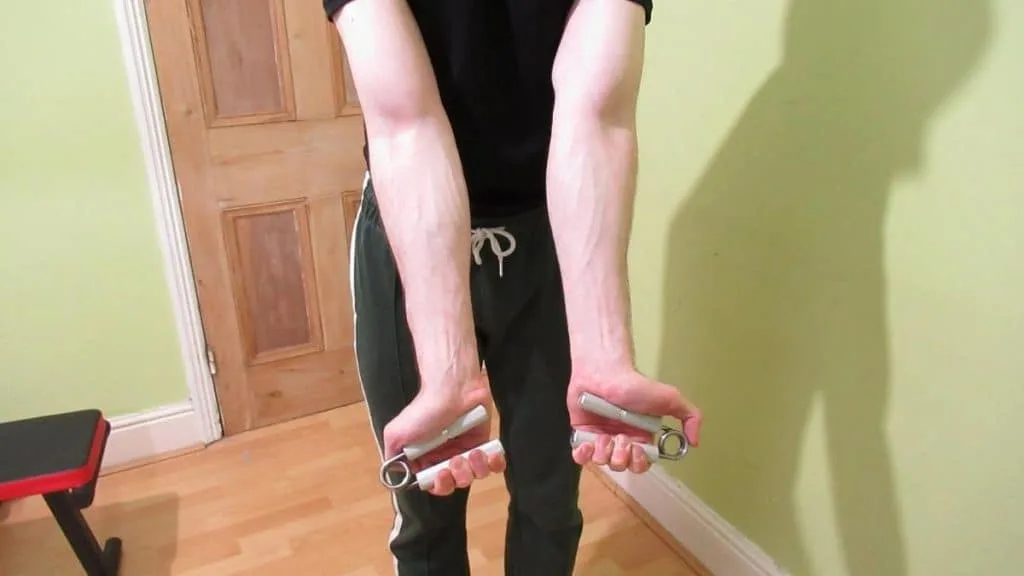
Anyone with a strong grip usually has the forearm size to match.
So if you have big biceps, small forearms, and a desire to change, then it’s worth your time to try grip strengthening exercises.
Go and watch some strongman or arm wrestler videos and see how they train. It’ll be positively eye-opening. You’ll realize that the only reason bodybuilders have decent forearms is because they have the chemical-assistance to compensate for their sloppy training.
Otherwise, they’d have pathetically weak forearms.
In the olden days, people had big forearms (likely bigger than those of the current generation) because they picked up heavy objects other than barbells and dumbbells. Do the same, and I have a strong suspicion that you’ll be rewarded.
Train your forearms separately

Arnold and many other bodybuilders of his era would train their main muscles in a morning session and then come back in the evenings to work on their smaller muscle groups like the calves, abs, and forearms.
So if you have big biceps and small forearms, do an upper arm session earlier in the day and then train your forearms later. This way, you can hit your forearms harder and get better results because they’ll be fresher and thus able to produce more force.
Related workouts
Experiment with rep ranges
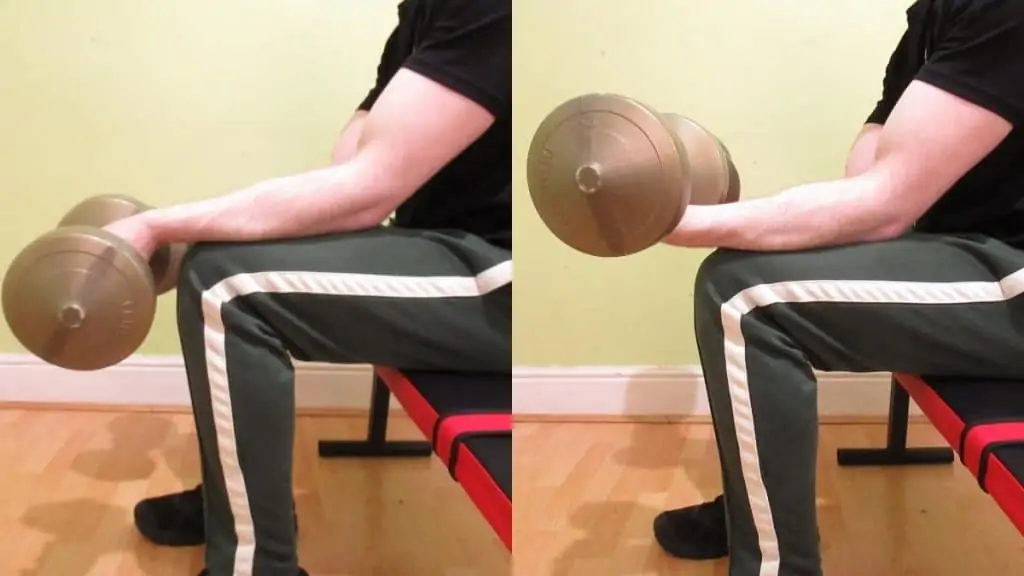
You can read as much science as you like, but in many cases, you’ll still be as confused as you were before in terms of practical application. [1] For every study showing that high reps suck for muscle growth, you’ll find another saying that they’re optimal. [2]
The best experiment that you can do is the one on yourself.
Try high reps and low reps and see which you most enjoy.
In reality, you’ll probably get the same results regardless of which rep range you employ, so you might as well have fun on the journey to building proportional arms by getting some enjoyment out of your training.
Is having big biceps but small forearms bad?
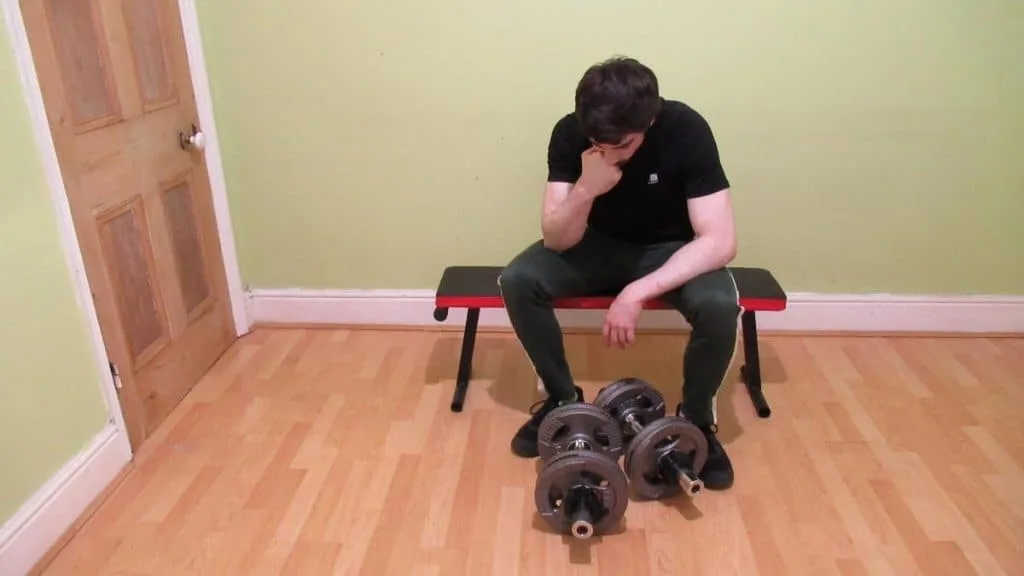
Well, it’s certainly normal. And while I’m not the biggest proponent of typical bodybuilding forearm exercises, I do believe in forearm/grip specific training.
So yes, if you have bicep biceps but small forearms, then I think that you should seek to change the disparity. After all, you’ll never look worse by improving your forearms. Unless, of course, we’re talking about Popeyes forearms.
Yeah, please don’t make your forearms bigger than your biceps.
Parting words of advice
First and foremost, if you have big biceps and small forearms, then you should ensure that your technique is solid. From there, you want to play around with training volume and training frequency and try and find a sweet spot for your genetics and recovery capabilities.
Other than that, I firmly believe that those who enjoy their training get the best results. So do exercises that are tolerable, even if that seems hard when the lactic acid is burning your forearms.
Thanks for reading, and good luck with your forearm transformation!
References
- Schoenfeld, B. J., Peterson, M. D., Ogborn, D., Contreras, B., & Sonmez, G. T. (2015). Effects of Low- vs. High-Load Resistance Training on Muscle Strength and Hypertrophy in Well-Trained Men. Journal of Strength and Conditioning Research, 29(10), 2954–2963. https://doi.org/10.1519/jsc.0000000000000958
- Schoenfeld, B. J., Grgic, J., Ogborn, D., & Krieger, J. W. (2017). Strength and Hypertrophy Adaptations Between Low- vs. High-Load Resistance Training. Journal of Strength and Conditioning Research, 31(12), 3508–3523. https://doi.org/10.1519/jsc.0000000000002200

